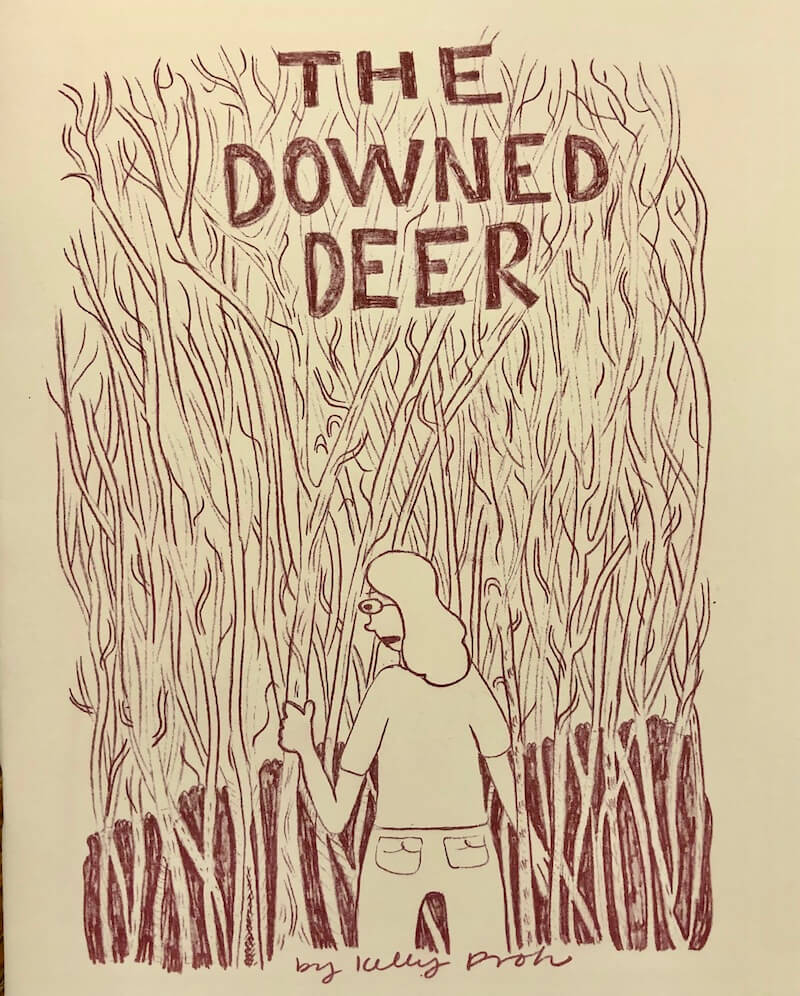Thursday Comics Hangover: Missing persons

Printed in a deep muddy brown ink on cream-colored paper, Seattle cartoonist Kelly Froh's latest comic, The Downed Deer, looked different than every other book at Short Run this year. The cover, featuring Froh peering into a mass of branches and vines, evokes something darker than most of Froh's work — more complicated, more serious. This cover is not lying to you.
The Downed Deer begins with Froh and her real-life partner, cartoonist Max Clotfelter, driving through rural Florida. They see something strange — a disheveled man running into the woods — and they keep driving. Then, Clotfelter has to go into the woods to pee. He doesn't come back out.
As Froh camps by the side of the road in a vigil for the missing Clotfelter, she becomes a bit of a media sensation. The police investigate his departure, and find no leads. Froh appears on TV news and local women bring her food. She sits there staring into the dense vegetation of roadside Florida, trying to will Clotfelter back into the world. Then, more menacing things start to happen.
When I picked up The Downed Deer at Short Run, Froh told me not to flip through the book; she said seeing some of the later pages would ruin the book's surprise. Now that I've read The Downed Deer all the way through, I see what she means. But even knowing that the ending is surprising doesn't sap the book of its impact.
The indicia on the inside front cover of The Downed Deer makes it clear that the book "is a work of fiction." But Froh has been drawing herself in autobiographical comics for so long now that her "character" feels familiar to us, and so the horror of the book strikes a little deeper than it would with all-new characters created just for the story. Despite the clear and up-front insistence that the book is fiction, Froh's regular readers, who have grown accustomed to the cartoon Froh standing in as a one-to-one avatar for the cartoonist herself, can't help but wonder how much of the story is true.
Adding to the impact, too, is the book's blending of styles. As usual, Froh's self-portrait is just made up of a few lines — one big rounded mass of hair, no differentiation between her eyes and her glasses, a plain t-shirt and jeans. But Froh (the character) camps out on the fringes of the dense forest, which Froh (the artist) illustrates in deep detail: the leaves on bushes could also be a reptile's scaly skin, the branches of trees could be people waving off in the distance. Are those snakes or switchgrass? It's unclear, and thrillingly so.
It's been a while since I've read a horror comic that worked as elegantly as The Downed Deer. It's unsettling from beginning to end, and the book builds to a crescendo worthy of a classic Twilight Zone episode. It's dark and menacing and wondrously effective comic storytelling.